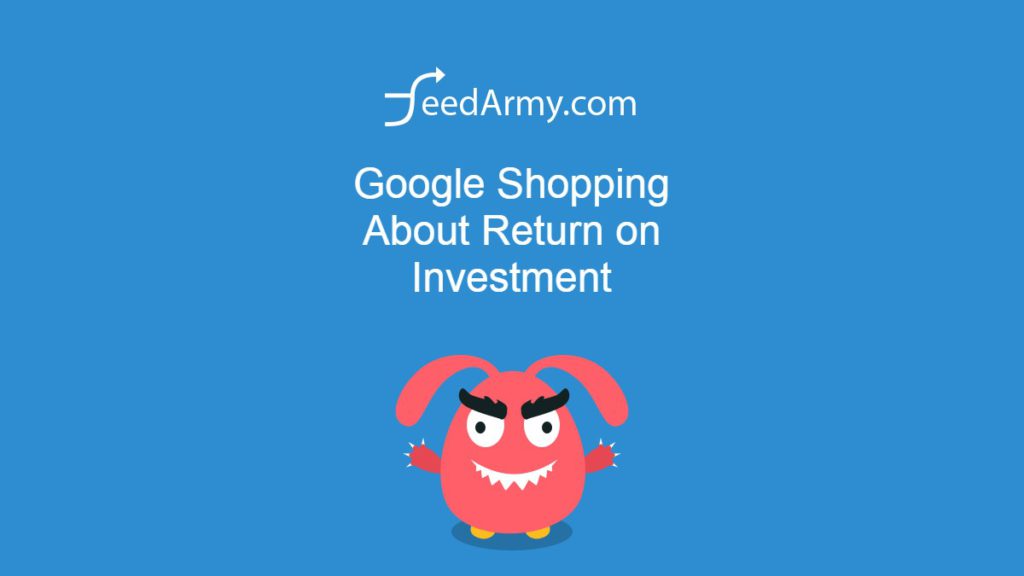When advertising on Google Shopping, it is imperative to know your targets. Every advertiser should begin advertising based on the return on investment, as this allows the business to survive and grow. By using the return on advertising spend (ROAS) as your target, you will be able to enjoy both profits and sales at the same time.
With Google Shopping, we can measure every action a customer takes, from calls, sales, contacts, quote requests, etc. using all these measurements allows us to identify what the ROAS is for each product or even categories. Enabling you to make the right decisions based on what the profits are.
All measurements can be tracked by using a combination of Google Ads and Analytics.
While it is ok to focus on clicks, budget, and other parts of advertising, the main objective is the return on investment.
Why use ROAS?
Using a ROAS target allows you to make adjustments such as bidding, ad schedule, mobile bidding, and many more settings to meet the required goal. When you do not have a ROAS target, it becomes impossible to know what to do. The bigger problem is not knowing if you are in profit. Managing advertising requires a ROAS target to ensure the business can grow at a healthy rate.
What else?
Did you know that not every converted click means it’s one sale at a static price? Take into consideration the fact that a purchase can be worth a lot more than you think. A customer can be buying multiple products or is purchasing various products. This increases the value of the sale allot more. You might have a fantastic cross-sell product that you would never consider spending a budget on. When using ROAS, you can be spending a bigger budget on CPC than you would typically do, as the return on investment for this particular product is worth allot more.
How to calculate ROAS
ROAS is calculated by using the sales value divided by ad spend = ROAS
For example $1000 (sales value) / $200 (ad spend) = 5 or 500%
Is the above not something you can directly calculate? Than check out the table below.
Another example by using a profit value. Let’s say for every product you sell via advertising, and you want to earn $5 in profit. We want to take the amount of the product and reduce the costs, which is the baseline profit. We know we want to keep $5 as profit. By reducing $5 from the baseline profit, you have to add additional spending. Then, the ROAS is calculated by dividing the baseline profit with ad spend.
Now we know with the chess set, we can have a target of 1.22 or in other words, we know we can spend $22.49
| sku | name | Price | Cost | Base Profit | Profit Value | Add Spend (Base Profit – Profit Value) | ROAS |
| Sku0 | Chess Set | $49.99 | $22.50 | $27.49 | $5.00 | $22.49 | 1.22 |
| Sku1 | Snakes and Ladders | $49.99 | $26.00 | $23.99 | $5.00 | $18.99 | 1.26 |
| Sku2 | Connect Game | $34.99 | $17.49 | $17.50 | $5.00 | $12.50 | 1.40 |
| Sku3 | Dominoes Set | $52.99 | $31.00 | $21.99 | $5.00 | $16.99 | 1.29 |
| Sku4 | Garden Tennis Set | $29.99 | $15.20 | $14.79 | $5.00 | $9.79 | 1.51 |
| Average ROAS | 1.33 |
Different conversions to consider
When it comes to advertising, many parts need to be measured, these are:
- Sales
- Calls
- Contact Forms
- Quote Requests
- Registrations
- and more…
All of these have a value to your business. Not considering these will eventually lead to lost opportunities.
For example, if you have a lot of calls and you know that around 2% convert into a sale, these need to be taken into consideration. You might have a product or a group of products that result in a lot of sales over the phone if we ignore this tracking we will never optimize the ads based on this information.
How to calculate the value of other forms of conversions
With sales, conversion tracking can accurately track the value of the checkout value. However, other forms of conversions, such as calls, have no direct value. So how do we calculate the value of a call? It’s rather simple once you know how to think. If you have been selling for a while, you know how much the values are of your sales. Let’s take the results of the last 90 days. If in the last 90 days, you had 30 sales with a total value of $25,000. You divide the total value by the sales (25,000/30)=$833 than you divide this figure with the average advertising conversion rate. Lets say this is 2.5%, so we divide $833 with 2.5% = $20.82.
This means that every call conversion is worth $20.82, you can now use this figure as your conversion value for calls.
You can be more accurate by finding out how many calls turns into a conversion and use this figure instead of your advertising conversion rate.

